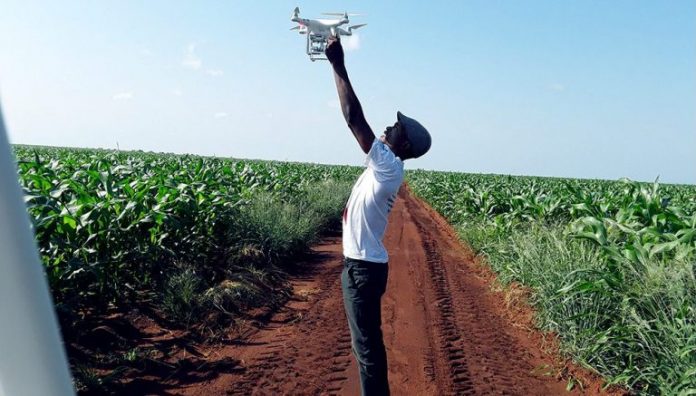Enhancing National Security Through Technology
By Mukhtar Ya’u Madobi
TECHDIGEST – It is obvious that the rising security challenges in Nigeria has apparently continued to defy all measures, thereby proving difficult to contain. This has therefore necessitated the need to employ other alternative approaches as a means to surmounting this monstrous hydra-headed problem.
With the currently ongoing 4th industrial revolution (IR) cutting across all sectors of humanities, the copious role of technology in tackling insecurity can never be downplayed in this digital age. The present revolution is mainly characterized by digitalization and automation-just as the one we see in robotic technology.
This IR has over the years led to the evolution and advancement of many technological innovations which can be employed in stemming the rising tides of security challenges in Nigeria. Notable among them include; Artificial Intelligence and Robotics (AIR), Drones, Internet of Things (IoT) among others.
Particularly, Information Technology has continued playing a significant role in strengthening national security against future upcoming threats and cyber-attacks. It can help countries to identify potential threats, share information easily, and protect mechanisms in them.
Although Nigeria has taken bold steps to settle their insecurity issues by the traditional security agencies through combat or physical and non-kinetic or soft approach, there still exist several unresolved issues bordering the country’s peaceful coexistence on one hand.
Embracing emerging technologies through accurate mapping of contiguous areas using geospatial science and technology such as satellite Remote Sensing (RS), Geographic Information Systems (GIS) and Global Navigational Satellite Systems (GNSS) on the other hand will be very apt.
Information and Communication Technology (ICT) can be a driver of national security through utilizing GPS Technology, social networking tools, Virtual Emergency Operations Centers, use of CCTV cameras, intelligent monitoring, Data Mining and Database Tracking among others.
Meanwhile, the application of drones to mount surveillance and collect relevant information has become a norm in security industries. To that effect, the country’s leading technological agency, National Information Technology Development Agency (NITDA) has engaged in doing a lot of efforts in providing digital solutions to Nigeria’s security challenge.
The National Center for Artificial Intelligence and Robotics, a subsidiary of the Agency is fostering the development of emerging technologies in preparing Nigeria for the Fourth Industrial Revolution through research and development of technologies like drones, robotics, Artificial Intelligence etc. as a veritable tool in combating National insecurity.
With the advent of artificial intelligence, automated vehicles and drones amongst many other hi-tech innovations in fighting war, it is noted that the use of technology in combating insecurity in the country can never be overemphasized.
It’s impossible for security professionals to monitor all parts of the building at all times. Having a unified system which includes cameras, alarms, detectors and analytics tools means that these individuals can be immediately notified if an incident occurs that requires their attention.
Read Also:
To that effect, CCTV cameras can be mounted in strategic locations and adequately monitored by assigned individual from a centralized platform. Through this, early warning signals can be detected and proactive measures can be quickly implemented to neutralize any incoming potential threats.
It is pertinent to understand that advances in technology are reshaping global security capabilities, from enhancing the way we monitor our borders to helping mitigate insecurity and the impact of natural disasters. Just a few generations ago, unmanned drones were confined to the pages of science fiction and artificial intelligence seemed years in the future. Today, sophisticated technologies are transforming every aspect of our daily lives.
Technology has been helping to mitigate security threats through various ways. These include but are not limited to areas like Cybersecurity, Autonomous Drone Technology, Using AI to interpret Satellite Images, AI Video Surveillance and Internet of Things connectivity.
Autonomous drones can be flown around locations suspected to be swarmed by criminal elements for efficient surveillance so as to gather intelligence and subsequently transmit to the database for analysis. And while their use often sparks privacy concerns, they are still a useful force to reckon with in security and defense.
For example, Mitsubishi Heavy Industry’s CoasTitan System in South Asia has been harnessing the power of autonomous air and sea vehicles to guard against coastline threats, including terrorism, illegal immigration, smuggling, pirates and illegal fishing
The Nigeria’s National Security strategy 2019, a document published by the office of the national security adviser (ONSA), Babagana Monguno noted that, “An evolving phenomenon in airspace security is the preponderance of drones which constitute safety challenges such as air misses and mid-air collisions with manned aircraft and security challenges such as air space violation, penetration of prohibited airspaces, threat to VIP security, terrorism and espionage.”
As we embrace the digital world, new types of crime become inevitable. While traditional cybersecurity defenses include monitoring, analysis, software management and network security mainly designed for IT systems, the latest developments are more proactive and designed for operational technology systems.
Security experts have long been able to tap into satellite images to help their prevention and response efforts. Now, with the availability and quality of these images increasing, they offer an even more valuable resource for security and disaster-relief operations. When flooding occurs, maps of the damaged areas can be rapidly drawn together, allowing resources to be directed appropriately. Other uses include in border security or in monitoring industrial trends.
In a similar way, today’s autonomous surveillance cameras eliminate the need for humans to spend hours staring at screens. Instead, connected sensors, network storage and AI-enabled systems can keep an autonomous, high-definition eye on things 24/7. They can be employed with software that has the capacity to detect movement and recognize individual faces, even in darkness.
The ever-increasing IoTs connectivity has both positive and negative implications for security. On the one hand, a plethora of information can be harvested and processed in a short space of time. Meanwhile, increasing the flow of information between devices exposes new threats and opportunities for interception.
Therefore, it is apparent that technology has been able to provide us with all the necessary softwares and hardwares needed in tackling every kind of security threat in the country. Thus, efforts should be channeled towards creating an enabling environment where these advances could be harnessed and utilized effectively to our advantage.
Mukhtar is a Staff Writer with Emergency Digest



















